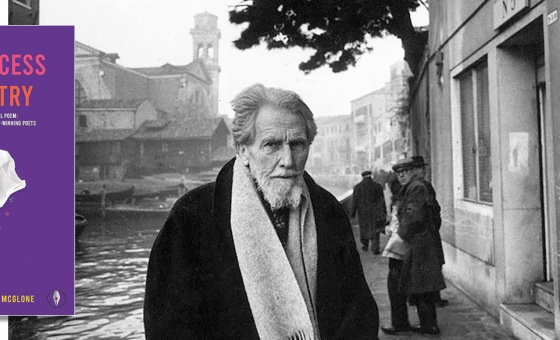This is the last article you can read this month
You can read more article this month
You can read more articles this month
Sorry your limit is up for this month
Reset on:
Please help support the Morning Star by subscribing here
THE labour theory of value states that the exchange value of commodities (goods and services) is proportional to the amount of socially necessary labour (work) embodied in them.
The qualification socially necessary is important because we have to assume that all work is done with the average levels of equipment and skill of any given time.
This law of value (as Marx always called the labour theory) is the foundation of his political economy. So it’s natural that many people think it was Marx himself who discovered the law.
But that’s not the case. The labour theory of value was taken for granted by the early bourgeois economists such as Adam Smith and David Ricardo, the so-called “classical” economists.
It is said that hints of the theory can be found in earlier thinkers, including Aristotle, Thomas Aquinas and John Locke.
And this isn’t surprising. The only quality that all commodities have in common is that they are the products of human labour, so it’s natural that their exchange value should be related to the quantity of labour required to produce them.
It was only after Marx had used the labour theory to show the origin of capitalist profit that conventional economists began to question it.
Unable to come up with a credible alternative, they abandoned theories of value altogether. Their studies of price formation conceal the underlying relationships in the capitalist system.
Which is why, though Marxist ideas have been dismissed 1,000 times by eminent thinkers, they keep bobbing up again, especially after a crisis like that of 2008.
The origin of profit is still a live issue, as it was for the classical economists. If all commodities, including labour, are bought and sold at their exchange value, as on average and in the long run they must be, then where does profit come from?
The problem was the value of labour. If all exchange values are based on the amount of labour embodied in commodities, how can we value labour itself?
Marx solved this puzzle with what is probably the most brilliant insight in the whole of his political economy. He pointed out that what workers sell to capitalists, in exchange for their wages, is not their labour, their actual work, but their willingness to work for a certain length of time. Marx called this commodity their labour power. (He had not yet made this distinction when he and Engels wrote The Communist Manifesto.)
Labour power differs from all other commodities in one important respect: when it is put to work it generates new value. Here is how Marx introduces the topic in his major work, Capital: “Moneybags must be lucky enough to find somewhere within the sphere of circulation, to find in the market, a commodity whose use-value has the peculiar quality of being a source of exchange-value; a commodity whose actual consumption is a process whereby labour is embodied, and whereby therefore value is created. Our friend does actually find in the market such a specific commodity. He finds it in the capacity for labour, or labour power.”
Marx goes on to define labour power as “the aggregate of those bodily and mental capabilities existing in a human being, which he exercises whenever he produces a use-value of any kind.”
Labour power is of course the property of individual workers. But they are obliged to sell their labour power to a capitalist employer who owns the means of production (factory, office, equipment, raw materials, etc) because without their own means of production they have no other way of making a living.
So what is the value of labour power that determines the worker’s wage or salary? The same as the value of any other commodity, ie the amount of labour embodied in it, in this case the value of the goods and services required for the subsistence and reproduction of workers and their families, at a socially determined standard of living that of course varies with time and place.
Workers sell their labour power for an agreed time generally determined by prevailing social norms. But when labour power is transformed into a day’s work it produces more exchange value than what the worker receives in return.
Marx illustrated this by a simple metaphor. Perhaps half a day’s work produces goods or services equal in exchange value to a day’s wage. For the rest of the day the worker is producing surplus value, the source of profit, interest and rent.
However, while such an example might illustrate the principle, Marx’s analysis relates not to individual workers producing single commodities with an easily discernible selling price, but the whole of capitalist production in the aggregate.
Workers in an Amazon warehouse or in a supermarket checkout for example do not themselves produce a service with a clearly identifiable price. But their work enables the surplus value of goods produced by others to be realised as profit.
A cleaner working for Veolia or other outsourced company generates surplus value and profit directly for the employer. But exploitation does not disappear if the service is delivered direct to a public authority.
The surplus value — the difference between the value of the service provided and the cleaner’s wage — is taken by capital in a variety of ways: as rent, in interest charges, or as profit on capital equipment (“dead labour”) and consumables supplied by private companies.
At a further remove, teachers and medical staff working in the public sector do not themselves directly produce surplus value. But their work facilitates the production and reproduction of labour — the capacity to “sell” labour power in others.
In academic work too, irrespective of whether it results in patentable “commodities,” capital manages to cream a profit through its monopoly of the way in which knowledge is disseminated (and careers promoted).
And the same applies, in aggregate, to those who are self-employed — who have constantly to look for different “employers,” “clients” or “customers” to sell their labour power to, despite the fact that they will normally quote a price for a job rather than a fixed day rate.
Even though their employer may not be directly profiting (and much self-employment is fictitious, to help the employer evade taxes, holiday pay and the like) the fact that workers have to supply and maintain their own tools and/or premises means that they are helping to realise the surplus value produced by other workers.
In aggregate, the value of labour (work; what the capitalist gets) is always greater than the value of labour power (what the worker sells).
That is why Marxists say that all workers are exploited, not just those who suffer exceptionally poor wages or conditions.
They are exploited because they don’t receive the full value of what they produce, and because they have no control over the disposal of the surplus, which belongs absolutely to the capitalist employer.
So the distinction between labour (work) and labour power is vital for understanding the hidden workings of capitalism, the social relationships between dependent workers and controlling employers that give rise to classes and the class struggle.
For more information about the Marx Memorial Library visit marxlibrary.org.uk.











